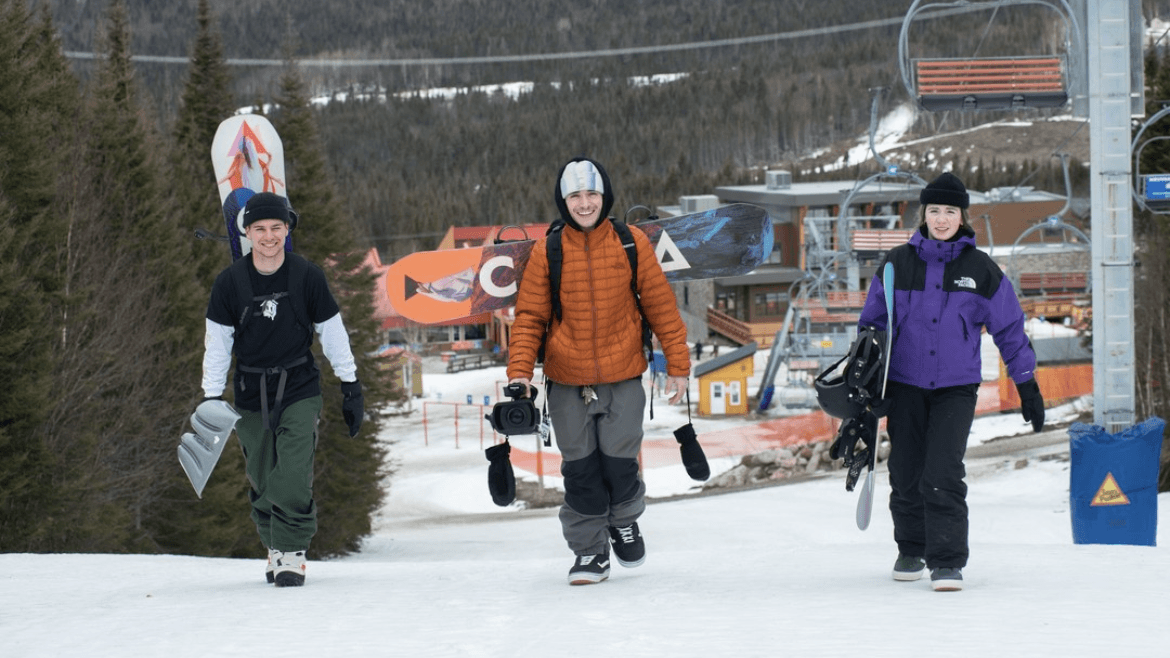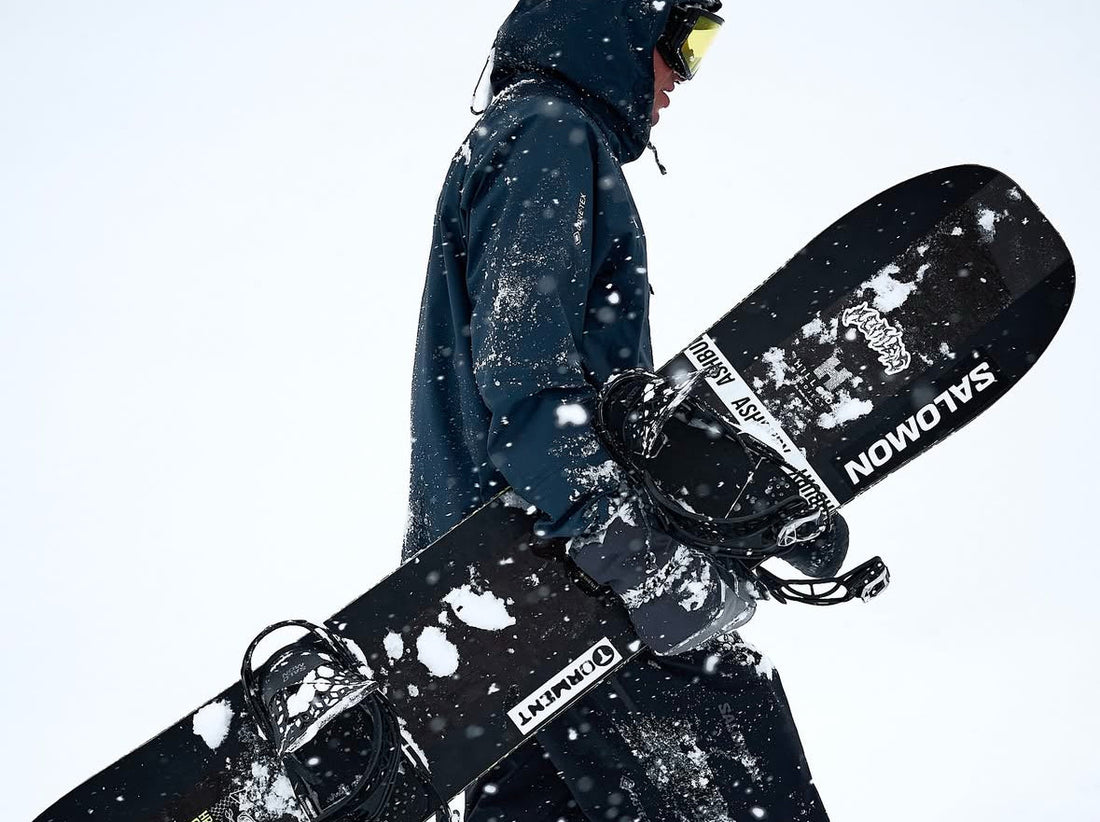When practicing a winter sport like snowboarding, you need to know how to dress properly to protect yourself from the elements like snow and wind. You also need to be able to manage the perspiration caused by the physical exertion of practicing your sport.
The three-layer system is the best method for staying dry and warm:
A layer to manage and wick away perspiration, an insulating layer to provide warmth, and finally, an outer layer to protect against the elements.
 1st breathable layer to manage perspiration
1st breathable layer to manage perspiration
When we exercise, our body temperature rises and we sweat. If your shirt gets wet from this sweat, you'll feel cold as soon as you stop exercising because the water stays in contact with your skin. The first step is to avoid wearing a shirt that absorbs sweat.
For example, you should avoid wearing a cotton sweater at all costs, because this fabric is very absorbent and takes a long time to dry.
Your choice of sweater should therefore lean towards synthetic fabrics, such as polyester or polyamide. These fabrics do not absorb water. Therefore, when sweating, moisture is expelled outside the garment and is no longer in contact with the skin. Wearing a technical fabric made of synthetic material therefore helps eliminate water and moisture, and you will no longer feel cold when you stop exercising.
Another interesting choice for the first layer: merino wool. This wool, even when wet, retains warmth and limits odors. It is a wool that can absorb a lot of water and thus remove sweat from your skin, again with the aim of not creating a cold. You don't even have to wash merino wool after each use, so it's perfect if you want to ride all weekend without having to worry about washing!
By the way, if you want an interesting first layer and have some extra style, think about the famous Ninja Suits from AirBlaster!
 2nd insulating layer for extra warmth
2nd insulating layer for extra warmth
The second layer is to protect you from the cold and retain the heat produced by the body.
The quality of a garment's insulation is measured by its ability to trap air within its fibers. There are several types of insulation, so you can adapt your second layer according to the temperature:
Hot outside temperature or sustained activity:
In this case, the second layer can be left aside. However, you can carry an insulating layer in your bag to withstand the cold when you stop exercising, such as when climbing a splitboard, for example.
Cold temperature:
In colder conditions, a fleece jacket is ideal for providing the necessary warmth. Alternatively, synthetic down jackets are a good choice, as they are warm, compressible, and easily washable. Synthetic insulation is often preferred because it manages moisture better. Natural down, while warmer, tends to absorb water and thus loses its insulating power.
 3rd waterproof and windproof layer
3rd waterproof and windproof layer
The third layer is the famous shell. This is the layer you put on top of everything else to protect yourself from snow, wind, or water. Most of the time, all the seams of this type of layer are waterproof and taped. This prevents water from penetrating the jacket.
Some coats also have ventilation, in the form of a zip, to allow perspiration to escape.
When we think of the third layer, we quickly think of Gore-Tex, which offers very good waterproofing. However, this final layer can be chosen according to your own needs, and many different options exist.
Finally, some snowboard jackets sometimes combine insulation and protection from the elements ( 2nd and 3rd layer). So, if you think you don't need to manage all the different layers because you're more of a mountain rider, these jackets are for you!





